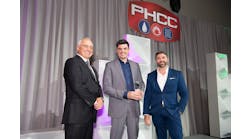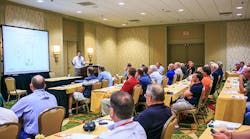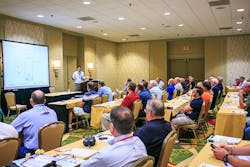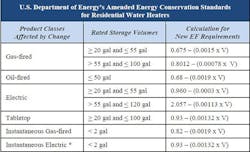On April 16, 2015, water heater energy factor (EF) requirements officially increased as the result of updates to the National Appliance Energy Conservation Act (NAECA).
Water heater manufacturers and trade organizations put forth significant educational efforts, beginning as early as 2011 to help bring the industry up-to-speed regarding these important changes, but feedback from the field suggests that knowledge gaps may still exist for some when it comes to the new EF requirements.
What exactly happened?
New water heater EF requirements went into effect for products manufactured on or after April 16, 2015. These changes were the result of updates to the minimum efficiency requirements as authorized by NAECA.
This federal law requires the Department of Energy (DOE) to periodically update the efficiency standards for most household appliances. Water heater manufacturers are now building water heaters with higher EF ratings on virtually all residential and some light-duty commercial products.
While all affected models have seen an increase in the EF requirement, the most dramatic changes are in larger capacity models. The DOE established the EF requirements for residential gas and electric water heaters over 55 gallons to drive manufacturers to implement new, more energy efficient technologies.
It is important to note that the new rule only dictates the new EF requirements, and not the means by which manufacturers must meet the new requirements. As a result, manufacturers have made significant investments in research, engineering, manufacturing and testing to accommodate the new federally mandated changes.
The new formulas that are being utilized to determine the new EF requirements are depicted in the below table: U.S. Department of Energy’s Amended Energy Conservation Standards for Residential Water Heaters Product Classes Affected by Change Rated Storage Volumes Calculation for New EF Requirements.In order to meet the new EF requirements, some residential tank-type water heaters from 20 to 55 gallons have modified components, increased in size to accommodate additional insulation, or both. The size changes vary by manufacturer, but generally range from up to two additional inches in diameter and up to two additional inches in height. For some electric water heaters, insulation blankets are also being used.
This increase in product size requires additional manufacturing materials and adds to the overall weight and cost of the products. For products over 55 gallons, some alternate technologies have been required to meet the new EF requirements, such as heat pump water heaters for electric and high efficiency condensing water heaters for gas.
Toward the end of 2014, water heater manufacturers released their new NAECA-compliant product specs and pricing, and since then manufacturers and wholesalers alike have been working to help contractors transition to the new standards. It is strongly recommended that all HVAC and plumbing contractors who install water heaters become familiar with the new NAECA products as quickly as possible to understand how the various product changes will affect their business and customers.
Canada's Energy Efficiency Act
Similar to what is happening with NAECA in the U.S., Natural Resources Canada (NRCan) Office of Energy Efficiency (OEE) has proposed amending Canada's Energy Efficiency Regulations for residential and some light duty water heaters.
The proposed Canadian requirements are similar to those required in the U.S., so in most cases, water heater manufacturers should be prepared to accommodate the needs of their Canadian customers.
The challenge in Canada is that the Provinces of British Columbia and Ontario have slightly different requirements than the rest of Canada, and overall, the new requirements are being phased in between April 2015 and April 2016.
Certainly, the water heater EF updates in both the Unites States and Canada have posed challenges for manufacturers, wholesalers, installers and customers alike, but when products become more sophisticated or complex, it is less likely that they will be purchased and installed by the do-it-yourself consumer.
Therefore, a potential impact of both the DOE and NRCan water heater regulation changes will be an increase in the share sold through wholesale distribution, thereby, increasing installer opportunities.
Carl A. Pinto Jr. is the director of marketing for Bradford White Water Heaters. As director of marketing, his responsibilities include the development of all Bradford White Water Heaters marketing and public relations communications and oversight of the company’s product marketing team. He also represents Bradford White as a liaison to many industry organizations. Carl began his career with Bradford White in 2012, after having served for nearly three decades in a variety of marketing, public relations and process improvement roles with a number of Fortune 100 companies such as UnitedHealth Group, GE, AIG and The Prudential. He is a certified Six Sigma Green Belt and holds a variety of communication and leadership certifications. He is a graduate of the Lock Haven University of Pennsylvania, where he is currently a member of the alumni advisory board.




